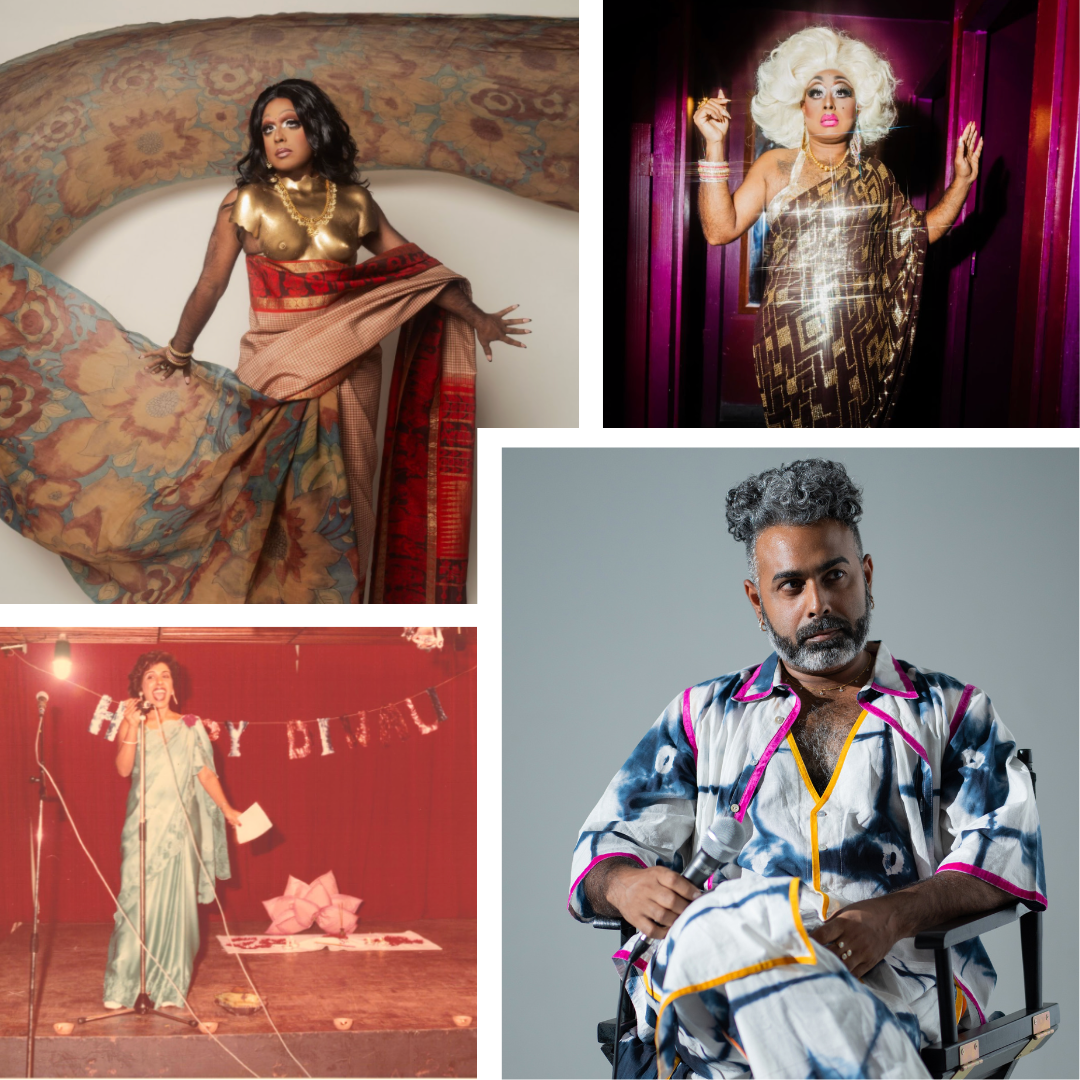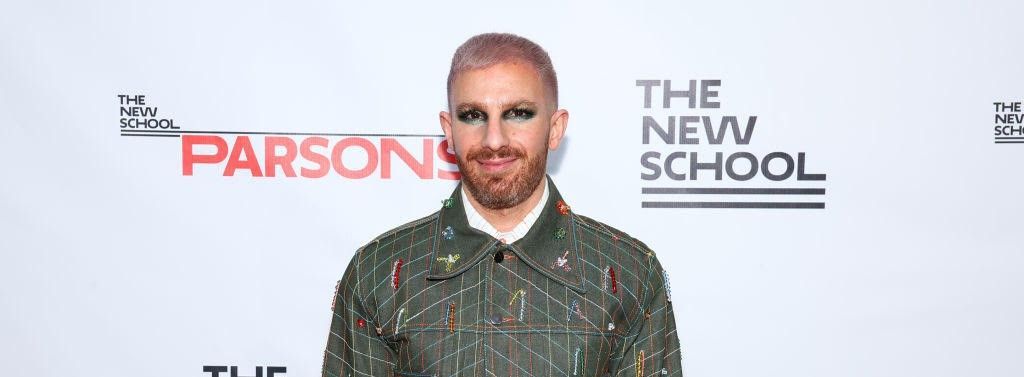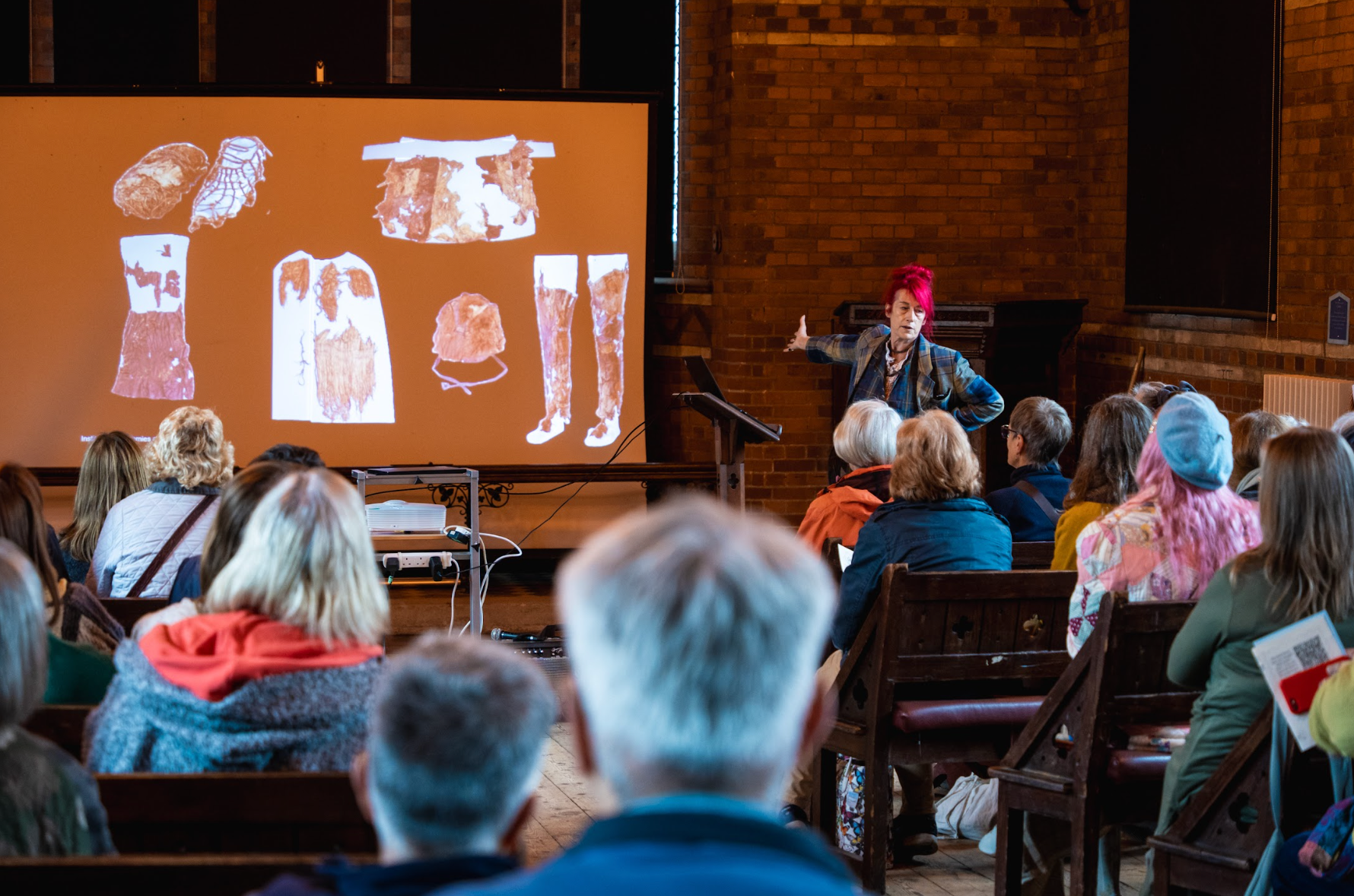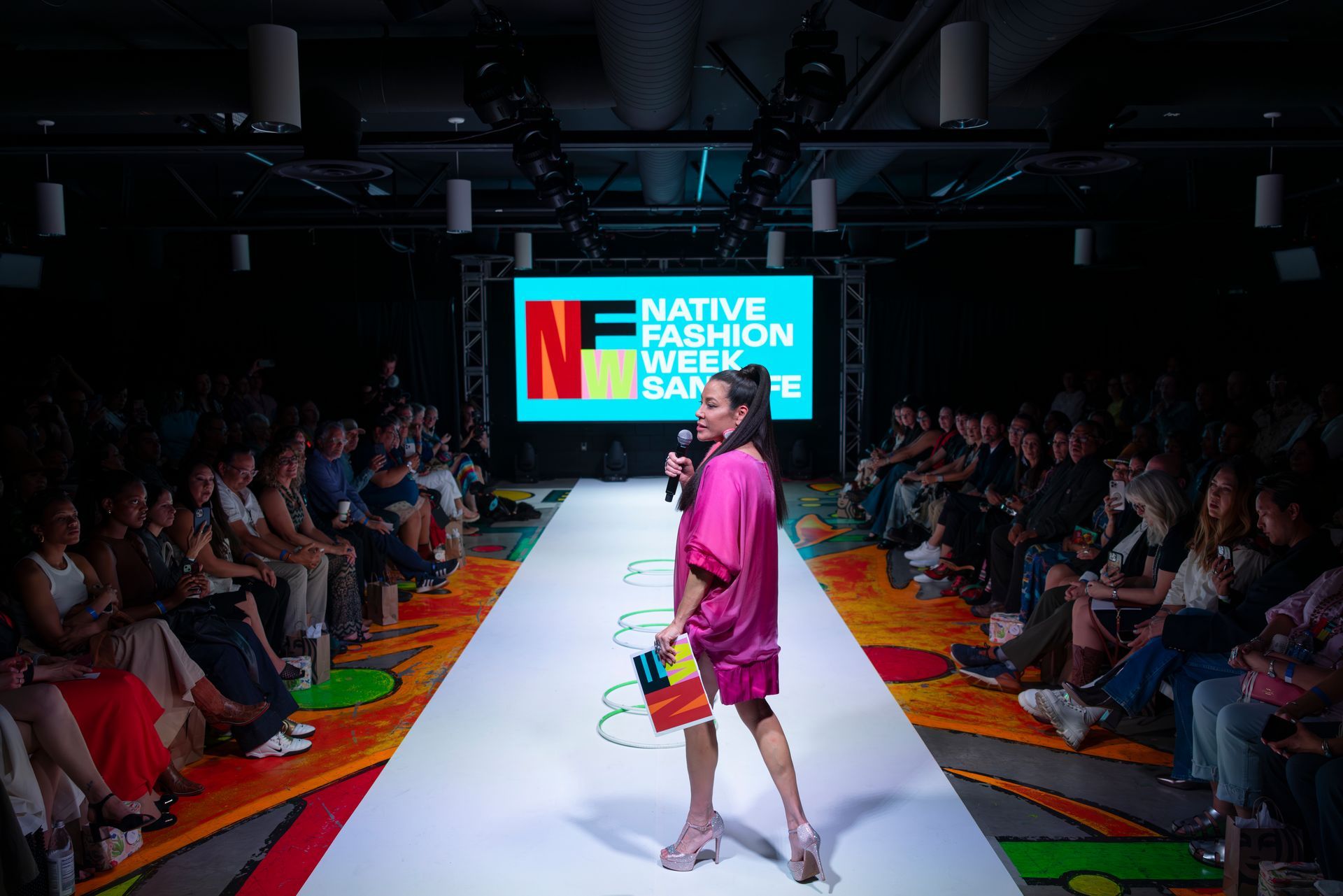Dialogues on Dress: Kareem Khubchandani
Drag performer and Associate Professor of Theatre, Dance, and Performance Studies at Tufts University, Kareem Khubchandani shares his thoughts on performance and fashion, the art of drag, and more!
The history of dress and the future of fashion act in dialogue, always interfacing to inform our present moment. The Costume Society of America’s diverse members exemplify this reality like no other; through the constant connections across time and disciplines they draw, our membership of costume curators, designers, artists, and so much more embody fashion’s ubiquitous presence - and dress’s daily power to teach us all something new.
We hope you will join us for CSA’s new Dialogues on Dress series, interviews now available monthly in our e-News and here on our website.
Interested in getting in touch? Email enews@costumesocietyamerica.com

Dialogues on Dress: Kareem Khubchandani
All art forms are complicated, conjuring their own stereotypes and supporters in equal parts. But perhaps few inspire quite as many opinions and confusions as drag; partially due to its elusiveness, since “drag can be so many things, it disrupts our understanding of what the body is,” and partially due to its highly conspicuous nature, designed to “attract attention,” as this month’s Dialogues guest shares. For Kareem Khubchandani, drag is about aesthetics, education, hosting community, and much more. He explores the full scope of drag in his musings, its many iterations and possibilities, while still managing to demystify and illuminate this incredibly complex art form. “People do strange, wonderful, weird things with drag,” he shares; it can be social commentary or purely silly, revelatory or just celebratory. And it is all done with the help of fashion, one of the tools we use to perform ideas daily. As an Associate Professor of Theatre, Dance, and Performance Studies at Tufts University in Massachusetts, researcher and writer, and performer himself as LaWhore Vagistan, his drag persona, Kareem speaks about the interplay of fashion and performance with nuance, precision, and resonance. Below, we discuss dress as data translator, showing up to teach class as LaWhore, and Fashion with a capital F.
This interview has been edited and condensed for clarity.
___________________________________________________
Please paint a brief sketch of your background, personal & professional.
I moved from Ghana to the US in 2000 for undergraduate studies [at Colgate University in Hamilton, New York]. I visited NYC regularly—which is where I came out—and I would go to these queer South Asian parties. I was shocked and fascinated by how there could be such familiar sounds of my home and family, but in this very sexy, fun, and queer space. Eight years later I found myself in grad school for my MA and PhD at Northwestern in Chicago, Illinois in Performance Studies. I came to the US imagining a career in chemical engineering or as a pharmacist… I didn’t even know what performance studies was before moving here. But once I discovered it, it felt like a perfect fit. My dissertation at Northwestern became my first book: Ishstyle: Accenting Gay Indian Nightlife, ishtyle being an accented way of saying style. At the same time as my graduate studies, I started doing drag, so I was thinking a lot about embodied style through movement and the trope of the accent—embodied in the sense of dance, musculature, posture, pose; I was not yet thinking with dress and fashion. In the process of performing myself, I developed this persona of the South Asian auntie, which provided the scaffolding for my second book, Decolonize Drag. I was wearing saris to the nightclub and made this music video called Sari, a riff off Justin Bieber’s song “Sorry.” To talk about aunties, you have to talk about fashion, so I figured out I needed to learn more about dress. I applied to the Mellon Foundation New Directions Program, which allows midcareer scholars to take a little turn and try something new. Through that, I did a fashion studies and design track at Parsons in 2023/24, taking classes across their MA Fashion Studies program and Associate’s Fashion Design program. I also studied with a South Asian artist in New York, which helped me learn more about these textiles I was wearing myself and their context in fashion history.
What drew you to the field of Performance Studies once you discovered it?
At Colgate, I took an anthropology course on a whim. This professor, Yamuna Sangarasivam, blew my mind in so many ways, thinking about everyday practices as politically and historically significant. I ultimately majored in Sociology/Anthropology, and in my first job out of undergrad [at Williams College in Williamstown, Massachusetts], I would host these parties with professors and faculty where I would play music videos. One of them pointed out to me how queer the stuff I was playing was, and I thought… I’m allowed to say that? In those conversations, I learned about the existence of performance studies as a field. I started thinking about studying the relationship between Bollywood and the nightclub, as I had seen as a teenager and in my 20s, and performance studies felt like the right lens through which to study it. What we see in or on the body is a way of translating data. Doing drag, I translate my research for an audience through my performance with lip sync, dance, dress, and more.
~We often explain drag as one gender performing as the other, creating a binary and insisting that crossing is the idea at hand. For me, it is about aestheticizing gender. Acknowledging that it is an aesthetic and playing with that.~
I would love to hear how you would characterize your relationship to dress over the years. How has fashion influenced your work as well as personal journey?
My mother was a fashion designer. From home and with private tailors, she did bespoke work for her own clients. After school, I would go fabric shopping and to the tailor with her, and I would be sitting and collecting scraps and watching her sketch. Our house was full of fashion magazines. My mom went to high school in Gibraltar and then got married and moved to Ghana, so she was working with her high school home economics training, but she did have an amazing eye for design. My parents retired in Bangalore, and she continued designing there. She designed and created the outfits for a dance group I worked with. She knew the names for everything and could identify fabric just by touch—all learned just through vernacular practice. I took for granted that you could decide what you wanted to wear, that I could draw something and have it manifested because of her. I would return from trips home with these items I designed myself and from fabrics I had chosen, which is a very unique thing.
My relationship to Fashion, capital F, feels more complicated. Studying it in school always felt out of range for me. I felt I wasn’t always able to process the visual language, why different designers matter or how they overlap with other design practices, until I formally studied it in New York.
But drag forced me to think about fashion on a larger scale and consider it beyond gender. I remember being in a giant thrift store in Chicago during my graduate studies and going down the women’s aisle for the first time, realizing how much more I could play with if I gave myself permission to shop across the aisles. Drag pushed me to make choices not based simply on what I’m supposed to wear, but what I actually want to wear. I’m shopping for LaWhore [my drag persona], but also myself.
Tell me about your performance work as LaWhore Vagistan - how did she come about?
I started drag in Chicago in 2009 and created LaWhore for a performance at Northwestern, it was supposed to be sort of a one-time thing. We hosted a fundraiser and needed a South Asian drag queen to perform, and we couldn’t find one. This was my first time wearing a full face of makeup or doing something like this. But that fundraiser happened again and again, so I just kept performing... I ended up joining a drag class program at a nightclub in Austin, Texas where I was a postdoc for two years. It was structured as a classroom competition; we had homework, I learned how to use a sewing machine for the first time, and how to properly do makeup and style a wig. It also taught me about how to dress for drag. Through themed parties, I got to think about how to adapt my style and make new choices constantly. Drag was so exciting, the way it pushed me to develop a visual language and work with new materials. Like working with wigs—it is hard, sticky stuff. These are 3D designs, on bodies. I had to learn color theory, to make makeup show up the way I wanted on brown skin. I’ll also add, drag is really expensive. You learn to be glamorous with the least money possible. I wore saris, which you can get for very cheap but look great on stage. During that drag class, I made the song parody [Sari] and started to think about the figure of the auntie, which is how LaWhore evolved to who she is now.
~Drag attracts attention, so whether a parade or a protest, it has always been connected to activism [...] It is not just for the stage, but also everyday life. It is an ethic of mutual aid and care.~
Are there any recurring misconceptions you find about drag in general discourse? What is a good introduction to drag for the uninitiated?
Drag is a performance art form that many queer and trans people use to put gender on the body, with the goal of hosting community, bringing people together, and commenting on these themes of the body, stardom, fashion, and more. Or just to be silly. It doesn’t have to be social commentary or only about pop music. People do strange, wonderful, weird things with drag, and it is not just gender they are putting on the body. It is also about animality, race, religion… dress is one of the many ways we change the shape of the body to signify these ideas. With drag, people sing, do comedy, and use it for protest. Drag attracts attention, so whether a parade or a protest, it has always been connected to activism. Marsha P. Johnson, a black trans woman at the center of Stonewall activism in the late 60s/early 70s, also described herself as a drag queen. It is not just for the stage, but also everyday life. It is an ethic of mutual aid and care.
Something to know is that there are more than just drag queens—there are also kings, things, zombies. It’s not always about crossing gender—there are trans women and cis women who are drag queens, and they’re not “crossing” the gender binary. We often explain drag as one gender performing as the other, creating a binary and insisting that crossing is the idea at hand. For me, it is about aestheticizing gender. Acknowledging that it is an aesthetic and playing with that. There is also the assumption often made that drag is sexual (ie, the backlash against drag story hour). And yet you’ve got Sasha Velour performing as an armchair. Some drag is purposefully sexy, but that’s not the drag appearing at children’s events or teaching environments, and there is so much in this art form that has nothing to do with sexuality. There are longstanding prejudices against queer and trans people that are being placed on the drag body. It draws the ire of public officials who need something to criminalize. Drag can be so many things; it disrupts our understanding of what the body is, making it hard to criminalize and showing these laws are nebulous, specious, and transphobic.
Do you use drag in the classroom [as a professor at Tufts University]?.
I absolutely do. When I first started teaching, I discovered a lack of online archives with which I could teach about queer Bollywood. Specifically the material I saw in nightclubs. That stuff was not filmed or documented in the same way other kinds of dance were. So I thought, what if I brought the nightclub to the classroom and had LaWhore teach the class? In this process, I discovered how drag defamiliarizes the classroom and pushes students to see my body, that of the professor, differently. Drag still gave me access to authority, but in a different, and frankly fun, way. I will show up in drag to teach a class that is not even about gender or performance because it completely shifts the mood.
I teach a class at Tufts called Critical Drag, where students create personas and performances. They work over the semester to learn about the technologies and techniques of drag performance, its histories, and how drag moves across mediums, and then they create performances. Some of my former students are now drag artists or nightlife producers, so I am really proud of that class and the ways that it gives students a framework to engage with a very complicated art form.
I wrote Decolonize Drag for my students, in the sense that I found a lot of the texts on drag up until five or so years ago were very focused on a sociological lens. Not a lot was focused on the aesthetics and what performances themselves did and the questions about power they prompted. I wanted a text focused on how drag accomplishes its political ends, through close attention to dress, gesture, makeup, etc. The end of the book attends to each of those things individually, like song choice or drag name, really breaking it down. I want to show that drag is an aesthetic practice. This kind of writing has shaped my newest book, Lessons in Drag, which is structured as a manual and features a series of “How to…” chapters.
~ We often do not have the language to talk about how powerful fashion is in our lives; in Fashion Studies, we are lucky to know all these nuanced ways of speaking about it, but a lot of people do not realize how much their clothing carries stories - their own and those of a larger social phenomenon.~
Can you tell me a bit about your research? I would also be interested to hear how research intersects with and impacts your experience as a teacher.
One of the things I teach is Performance Ethnography. I try to frame the class around a research question I am working on. The first time I taught it, I was working on an essay about fun as a research method, which turned into an essay called “Dance Floor Divas”; so my first class on this was ethnography of fun. I’ve also taught it on kinship and most recently on dress. These are opportunities to be inside of my research while I’m teaching as well. My students help me build my bibliography; they raise new questions for me through their own research as well. Many of us teaching on the tenure track, trying to keep up with required research outputs during the semester, put texts in our syllabi that we also want to read.
Can you talk to me a bit about how fashion shows up in your teaching?
One of the things I read while studying at Parsons was Sophie Woodward’s method of Wardrobe Interviews, which involves sitting with your interlocutor in your closet and thinking about the stories behind clothes, using material objects as fodder for asking questions. Also thinking about how domestic spaces accommodate clothing, like in dressers, boxes, or drawers. I have wanted to do interviews like this with drag artists, so I got my students to do a project on what dress and fashion can do to help elicit more from your field. They did these amazing closet interviews. Their interview transcripts revealed how these people that thought they had anything to say about their clothing discovered they actually had all these stories within them. People are so unaware of how artistic they truly are with their clothing. We often do not have the language to talk about how powerful fashion is in our lives; in Fashion Studies, we are lucky to know all these nuanced ways of speaking about it, but a lot of people do not realize how much their clothing carries stories—their own and those of a larger social phenomenon.
~ Dress is the way we are always read first. Be it for our class, religion, race, and more. And when dress meets skin, that is where performance and fashion merge. When dress is on the body, what can a body become? ~
Looking towards the future, what is capturing your attention or on your mind these days?
Learning about how the language of fashion does different things in different fields has opened up so many pathways for thinking. I am overwhelmed by the possibilities. But one of the things I’ve started to think about is aging in dress. What happens to a drag closet after an artist passes? How can we imagine rich futures for clothing?
Dress is the way we are always read first. Be it for our class, religion, race, and more. And when dress meets skin, that is where performance and fashion merge. When dress is on the body, what can a body become? Whether on stage or in the classroom, I’m very aware of how I can transform myself and how I am perceived. These are themes I’ve tried to capture in my new film
Sari, Not Sorry, a drag film that comes with
an educational page about South Asian textiles. I am so grateful to the language of fashion studies, how with a closer attention to history and materiality I can articulate these ideas in a new way.
___________________________________________________
Thank you so much to Kareem Khubchandani for having this conversation with me! You can find him on social media here, and his new book, Lessons in Drag, is available here.
~Madison Brito Taylor
Images (clockwise from top right):
LaWhore Vagistan wearing her mother's wedding reception sari, a geometrically hand-sequined chiffon, to host her annual show DRAGISTAN. Photo by Mettie Ostrowski, 2024
Photo by Junaid Arif
Kareem’s mother, Shoba, wearing a blue satin sari with lace border to host a Diwali Ball in Accra Ghana
LaWhore wearing a checked kanjeevaram sari (des. KalamCreations) in a nivi drape, paired with an organza kalamkari sari (des. Nikita Untitle) flowing around her, and a gold breastplate (des. Misha Japanawala) as part of her
Sari, not Sorry video shoot. Photo by Mettie Ostrowski, 2024



